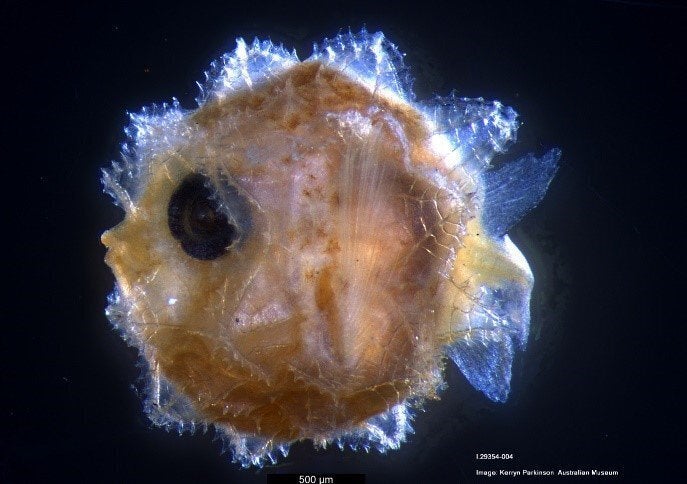A team of scientists has identified an elusive larval form of the ocean sunfish, an aquatic whopper of a creature that starts its life remarkably tiny.
The find, announced Wednesday by the Australian Museum and a media statement, was conducted by Australian and New Zealand researchers including Marianne Nyegaard of the Auckland War Memorial Museum, who has worked to identify characteristics of the massive fish found in tropical and temperate oceans.
Ocean sunfish can grow to nearly 10 feet in length and weigh over 4,400 pounds. They are identified by the genus name Mola and are separated into three distinct species. The term “ocean sunfish” usually refers to the first of these species, the common mola (Mola mola), and the other two species include the bump-head sunfish (Mola alexandrini) and the hoodwinker sunfish, (Mola tecta).

These gargantuan fish are renowned for growing an estimated “60 million times larger than when they hatched,” according to the nonprofit conservation organization Oceana, and females can release up to 300 million eggs at once.
Despite this staggering number, sunfish larvae have rarely been harvested and studied ― until Australian marine research vessel RV Investigator gathered multiple larval specimens off the coast of New South Wales in 2017.
In 2019, Nyegaard and fellow scientists Andrew King and Kerryn Parkinson of the Australia Museum analyzed one of these specimens, which had been preserved in alcohol, to determine which ocean sunfish species it belonged to. DNA was extracted from the larva’s eye and compared with that of an adult bump-head sunfish, and a match was found, making the specimen the very first identified Mola alexandrini larva.

In June, Nyegaard first announced the discovery on Twitter, calling ocean sunfish larvae “exceedingly cute but very hard to come by.”
“Given sunfish are so incredibly fecund, it is an enigma why their eggs have never been found in the wild, and why sunfish larvae are so few and far between,” Nyegaard said in her statement. “A genetic ID of one of these larvae is incredibly important but only one step on the long journey towards describing the early ontogeny of all three Mola species ― an endeavor which will require global collaboration. If we want to protect these marine giants we need to understand their whole life history and that includes knowing what the larvae look like and where they occur.”
Calling all HuffPost superfans!
Sign up for membership to become a founding member and help shape HuffPost’s next chapter
Credit: Source link